Organic solar cells at M2N
Organic solar cells convert sunlight into electricity via a complex sequence of events, starting with the absorption of light, followed by creation, separation, transport, and collection of charges. Organic solar cells rely on a photoinduced charge transfer at the interface of p and n type organic semiconductors that are combined into a nanoscopically phase segregated p-n bulk heterojunction to generate charges in a process that mimics natural photosynthesis. Following this event, charges must escape from recombination, separate spatially, migrate to the appropriate electrode, and be collected. Each of these processes poses intriguing scientific questions and exciting challenges to materials and device design to make the overall conversion both quantum and energy efficient, i.e. collect the energy of each photon with minimal losses.
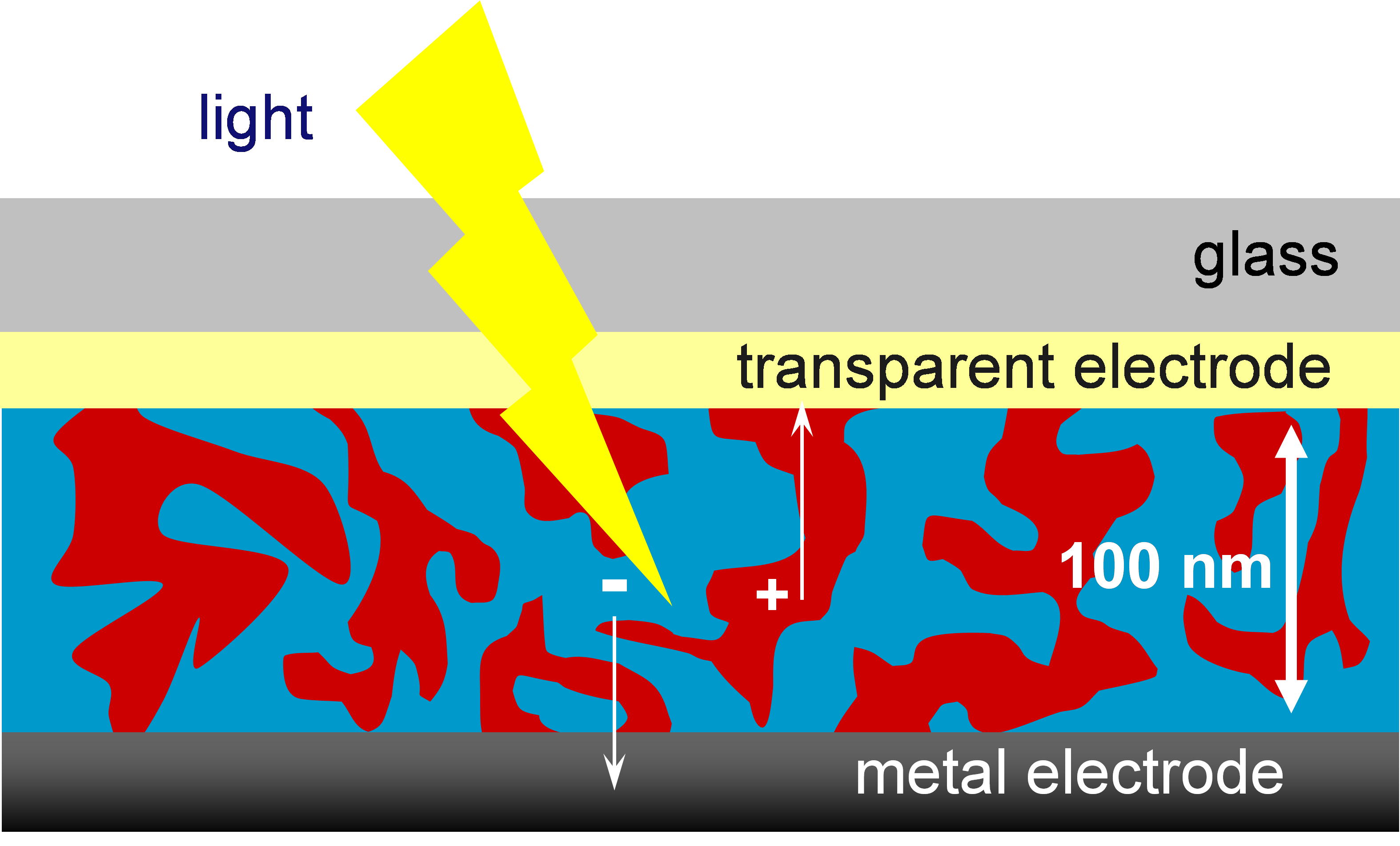
Layout of a bulk heterojunction organic solar cell
Important steps are now made towards developing new organic semiconducting donor and acceptor materials that are able to absorb a large fraction of the solar spectrum and convert this light efficiently. Progress further relies on optimizing both the charge carrier mobility and fine tuning the phase separation in the donor-acceptor bulk heterojunction to achieve high current densities and fill factors. Highest power conversion efficiencies reported for organic solar cells are now close to 15%
With these power conversion efficiencies, organic photovoltaics already provides a performance level close to that of existing thin-film technologies. Specific advantages are the use of non-toxic organic semiconductors and the possibility to add flexibility and color to the cells, or even make them transparent to visible light. These characteristics offer distinct opportunities in building integrated applications that cannot be met by other technologies. To further increase efficiency, every single step in the conversion process must be pushed to its intrinsic limits, eliminating losses to perfection.
Within the M2N group we investigate organic solar cells from different angles:
Synthesis of new semiconductors
We develop new semiconducting donor and acceptor materials for organic solar cells. The aim with these new materials is to create efficient charge generation with minimal photon energy loss. We focus on new donor polymers and new acceptor materials. By changing the molecular structure we can change the optical band gap, but also control solubility, charge carrier mobility and the energy levels of the frontier molecular orbitals that control the open-circuit voltage of these cells.
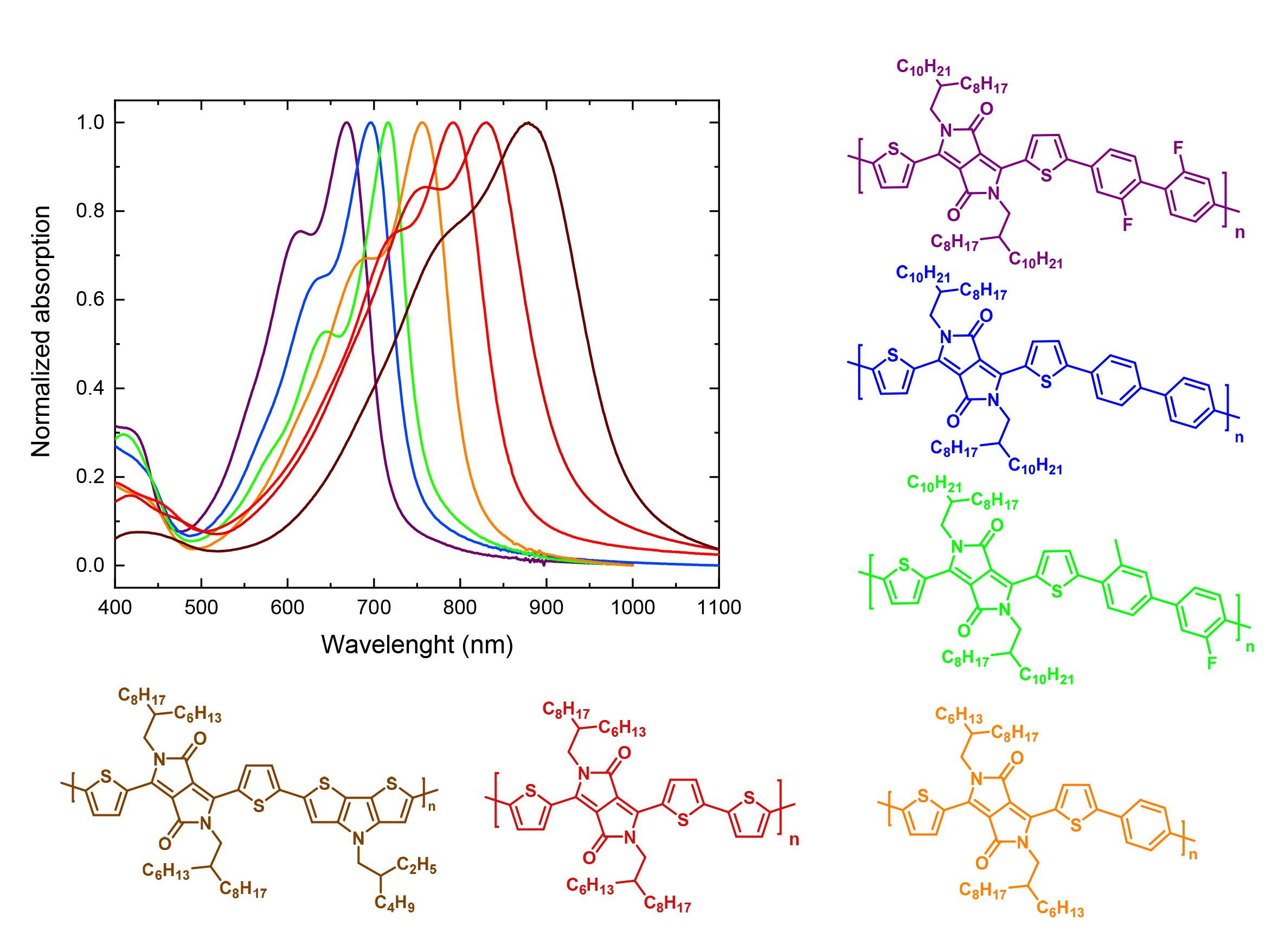
Absorption spectra of a range of polymer semiconductors with different band gaps
Morphology formation
The morphology of the photoactive layer of an organic solar cell is key to its performance. Nanoscopic mixing can only be obtained by controlling the self-organization of the components in films, which can be controlled via the chemical structure, the processing conditions of the photoactive layer and post-deposition treatments. We study morphology with transmission electron microscopy, atomic force microscopy and grazing-incidence wide-angle X-ray scattering. To learn more about the actual process of morphology formation we also investigate morphology formation during the drying of the layer with a range of optical techniques that enable to us to monitor layer thickness, phase separation and aggregate formation in real time.
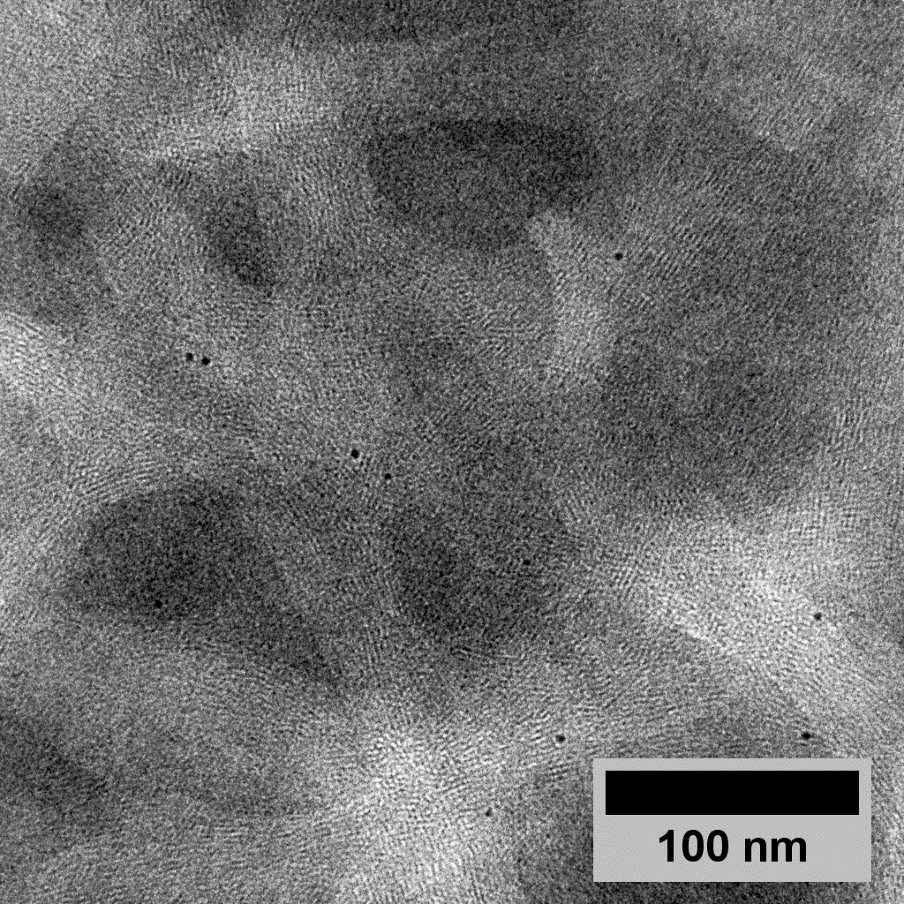
Example of a bulk-heterojunction morphology imaged with transmission electron microscopy. Semi-crystalline nanofibers of a semiconducting polymer can be seen in a darker fullerene-rich matrix.
We also address the formation of these morphologies using large-scale three-dimensional phase field simulations and modeled the phase separation dynamics leading to liquid−liquid spinodal decomposition that often occurs polymer-fullerene blends.

3D snapshots captured at different instances during evaporation-induced phase separation in a polymer-fullerene-solvent mixture.
Multi-junction solar cells
As one of the first in the world the M2N group succeeded in making multilayer organic devices via solution processing, using an approach in which consecutive layers are processed on top of each other using orthogonal processing strategies. An important part of such a multi-junction cell is the recombination layer that connects the cells optically and electrically. Materials that are used for these interlayers are doped conducting polymers, metal oxides nanoparticles or organic materials that induce dipoles at the interfaces. Not only tandem solar cells have been made, but more recently also efficient triple and quadruple junction solar cells have been developed.
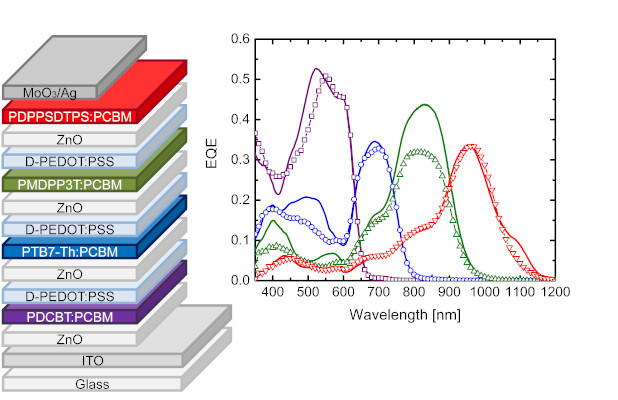
Stack design and external quantum efficiency of the first quadruple junction solar cells featuring four different band gap absorber layers.
Along with this progress in device complexity and efficiency, we develop techniques to characterize these cells in details using optically and electrically biased external quantum efficiency measurements in combination with optical modeling.
Novel processing techniques
Traditionally organic photovoltaic layers are processed from organic solvents on solid substrates such as glass or polymers. We are exploring the use of water, both as solvent and as a substrate.
Several of the organic semi-conductors can be transformed into aqueous mini-emulsions in which nanosized donor-acceptor particles are suspended by surfactant molecules. These mini-emulsion can be cast into thin films that form the active layer of a polymer solar cell
Another intriguing method involves processing organic photovoltaic layers on a water surface using spontaneous spreading. When a droplet of a solution containing the photoactive materials is in contact with the water surface, surface tension and interfacial forces can facilitate the spreading of this droplet into thin layer. Upon spreading, the solvent evaporates and the resulting film can be transferred to a substrate. The spontaneous spreading and transfer technique has allowed to make multilayer cells in which several organic layers of different composition are placed on top of each other
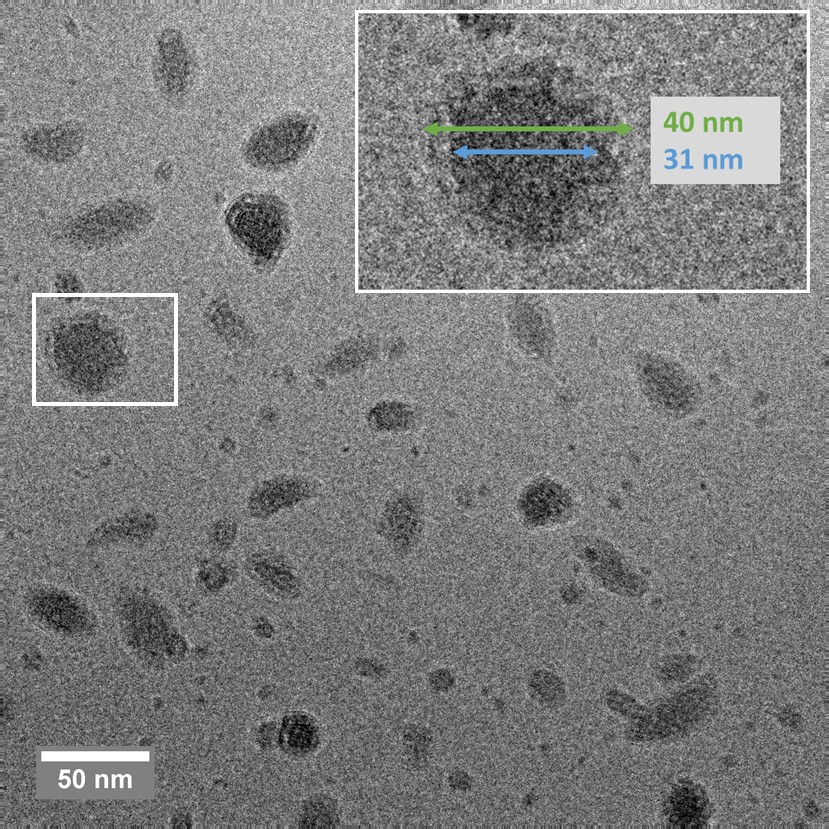
Cryogenic transmission electron microscopy image of core-shell polymer-fullerene nanoparticles in a mini-emulsion
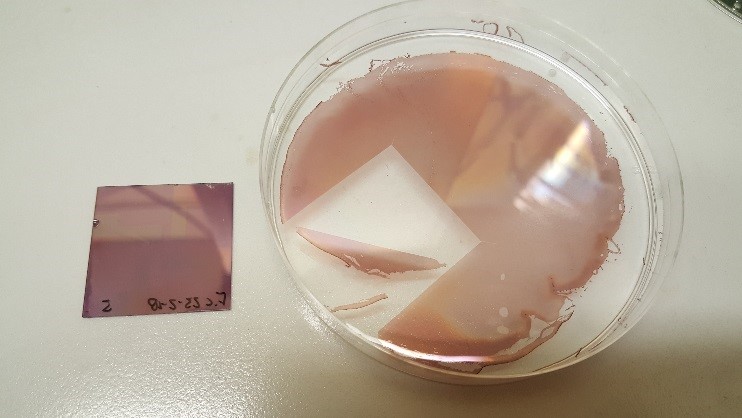
Spontaneous spreading of a polymer-fullerene layer on a water surface and subsequent transfer to a glass substrate.
Spectroscopy
While the efficiency of organic solar cells is steadily increasing over the past two decades, there are still many unknowns. These relate to question of charge generation, charge recombination and the presence of trap states. Within M2N we study the donor-acceptor blends with a variety of spectroscopic techniques such as time-resolved photoluminescence, photoinduced absorption, photothermal deflection spectroscopy and sub band gap external quantum efficiency measurements.
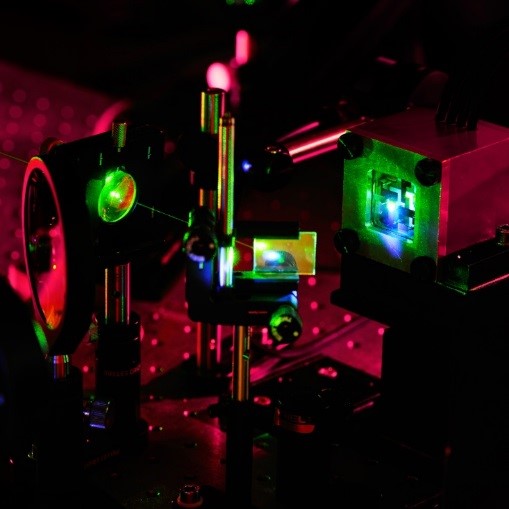
Spectroscopic setup for the characterization of organic solar cells.
Contact
René Janssen
Stefan Meskers
Martijn Wienk